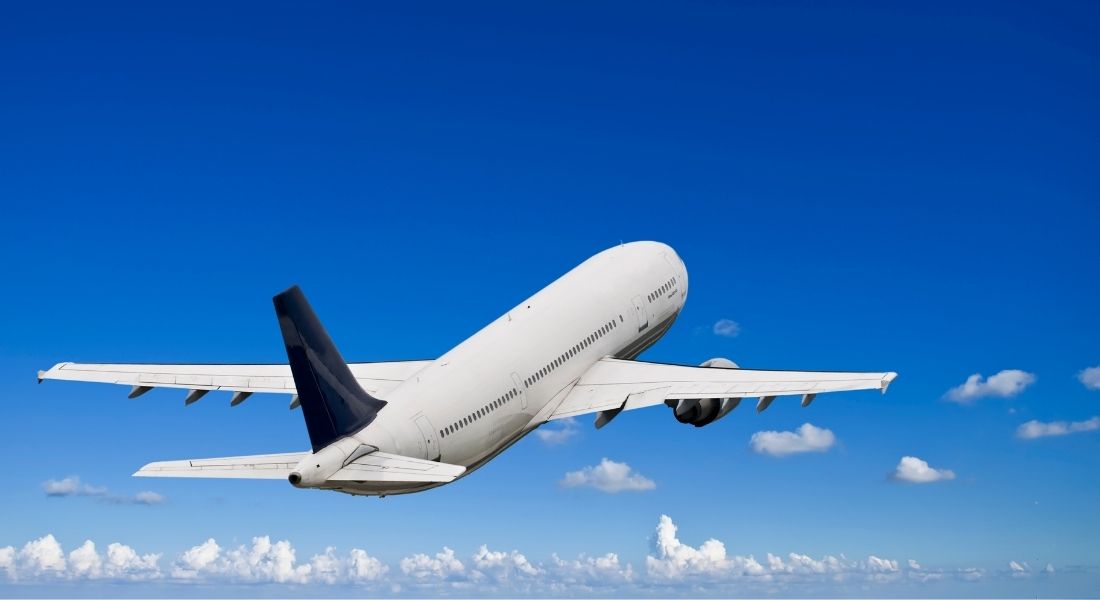Measures of global air traffic show resilient travel activity, but Asia’s recovery lags
Firms selling products and services with links to travel and tourism should anticipate gradual growth in international travel in 2022, as restrictions unwind over the course of the year and new virus waves should have progressively less impact on global flight volumes. Having experienced solid improvement in the last six months, travel within and between the Americas and Europe is set to rise faster in the coming months, while Asia-linked travel (ex-China) should begin to recover faster in H2. Continue to monitor countries’ travel policies and ensure your business is positioned to capitalize on growth in the right areas as travel corridors open.

Overview
Despite the spread of the Omicron variant in the last two months, several measures of global air traffic show only a minor impact on the air travel recovery. Omicron may have delayed the recovery in global travel by a couple of months, but hasn’t derailed it.
Global revenue passenger kilometers (RPKs), a measure of air traffic defined as the number of kilometers traveled by paying passengers, were 45% below 2019 levels in December 2021. This marks an improvement from November, when RPKs were down 47% from 2019 levels, and from October (RPKs down 49%).
The weeks after the discovery of the Omicron variant saw an increase in flight cancellations and a decline in bookings for January and February. Air travel has had a soft start to the year, but Omicron’s impact has been relatively mild so far. Global commercial flight volumes—a daily metric for the number of commercial flights completed—were 19% below pre-pandemic levels on January 31. This is less than the pandemic-era high for global flight volumes reached in early December, but even with late-November levels.
Our View
Although Omicron hasn’t been as bad for travel as initially feared, global travel remains well below pre-pandemic levels and is not set to fully recover until at least 2023. Border restrictions, particularly in Asia, are the key hurdle to a full rebound. International RPKs were 58% below pre-pandemic levels in December. For Asia-based carriers, international travel was down 88% from pre-pandemic levels.
As border restrictions continue to weigh on international travel, domestic travel has recovered faster, with global domestic RPKs down just 22% from 2019 levels. But variation in countries’ domestic virus containment policies has caused great variation in domestic travel volumes. Russia’s domestic air travel was 23% above pre-pandemic levels in December, as international travel curbs have driven wealthy and middle-class Russians to embrace domestic tourism. On the flip side, Australia’s domestic travel was 60% below 2019 levels in December. Despite Australia’s shift away from “Zero Covid” and the federal government’s increased tolerance for high case rates, state-level restrictions are still a barrier to domestic movement.
Overall, we expect global domestic and international travel to continue a gradual recovery throughout 2022. Although Asian travel is still subdued, we foresee a gradual unwinding of restrictions and increasing travel volumes over the course of the year, as governments become comfortable with high case rates leading to fewer hospitalizations. The exception is China, which is unlikely to open its borders until late 2022 at the earliest. In 2019, Chinese tourists accounted for 11% of all international tourist arrivals. China’s strict border controls therefore make it nearly impossible for international travel to recover to pre-pandemic levels this year.
At FrontierView, our mission is to help our clients grow and win in their most important markets. We are excited to share that FiscalNote, a leading technology provider of global policy and market intelligence has acquired FrontierView. We will continue to cover issues and topics driving growth in your business, while fully leveraging FiscalNote’s portfolio within the global risk, ESG, and geopolitical advisory product suite.
Subscribe to our weekly newsletter The Lens published by our Global Economics and Scenarios team which highlights high-impact developments and trends for business professionals. For full access to our offerings, start your free trial today and download our complimentary mobile app, available on iOS and Android.

